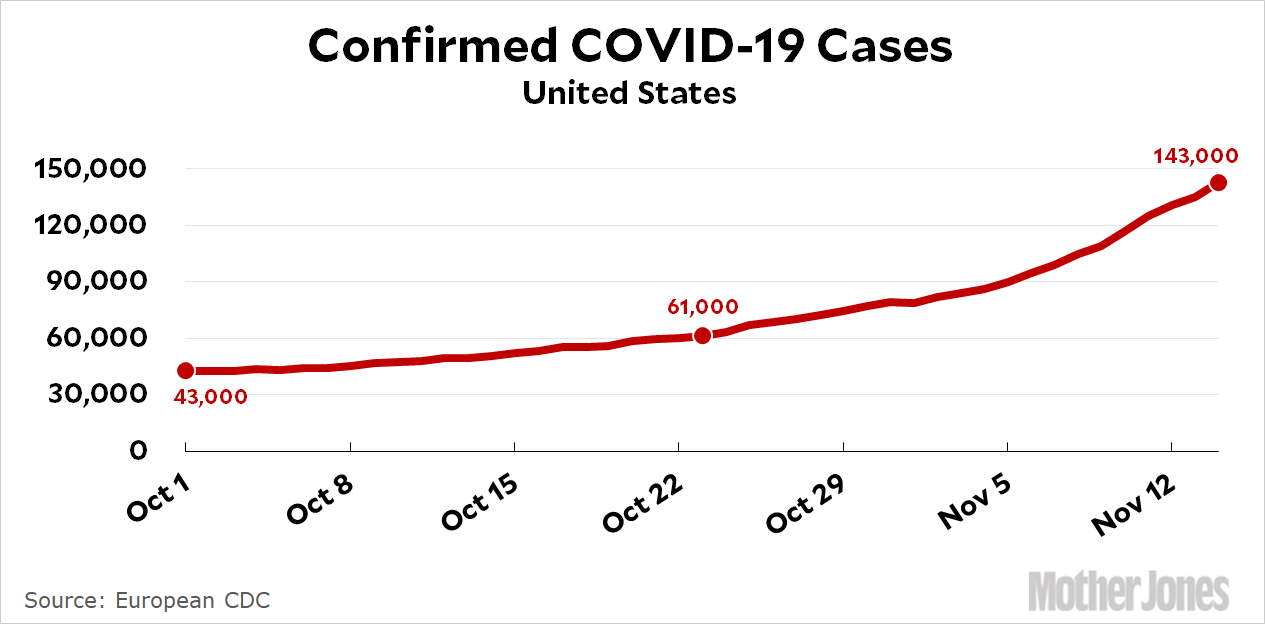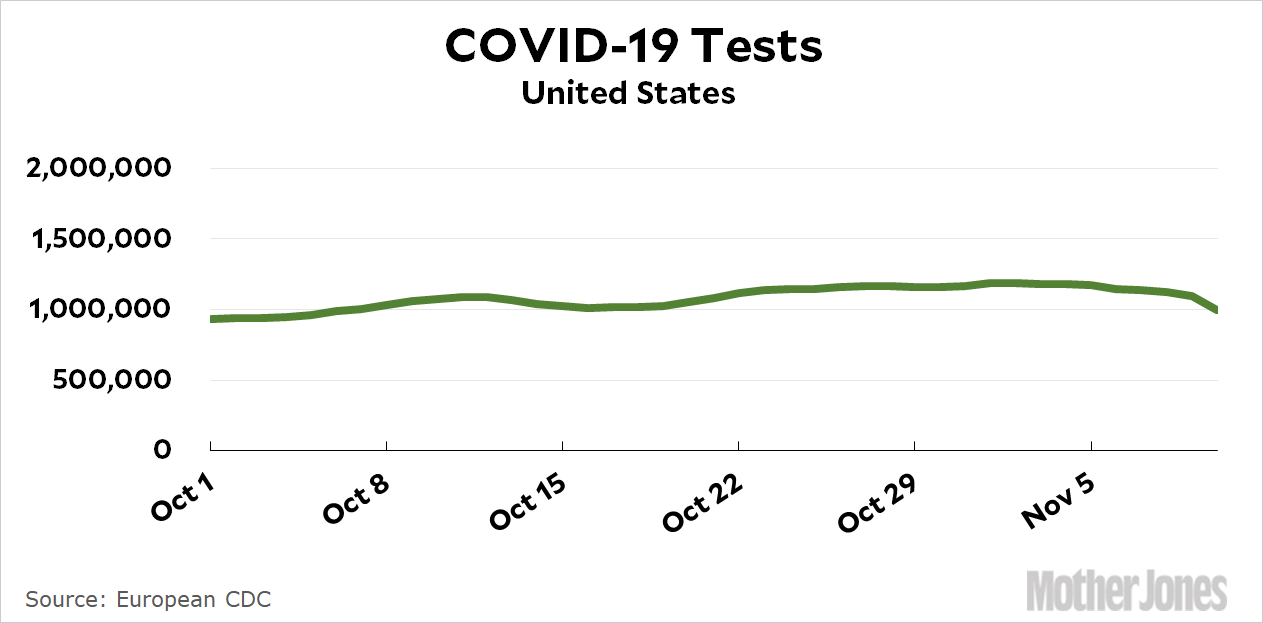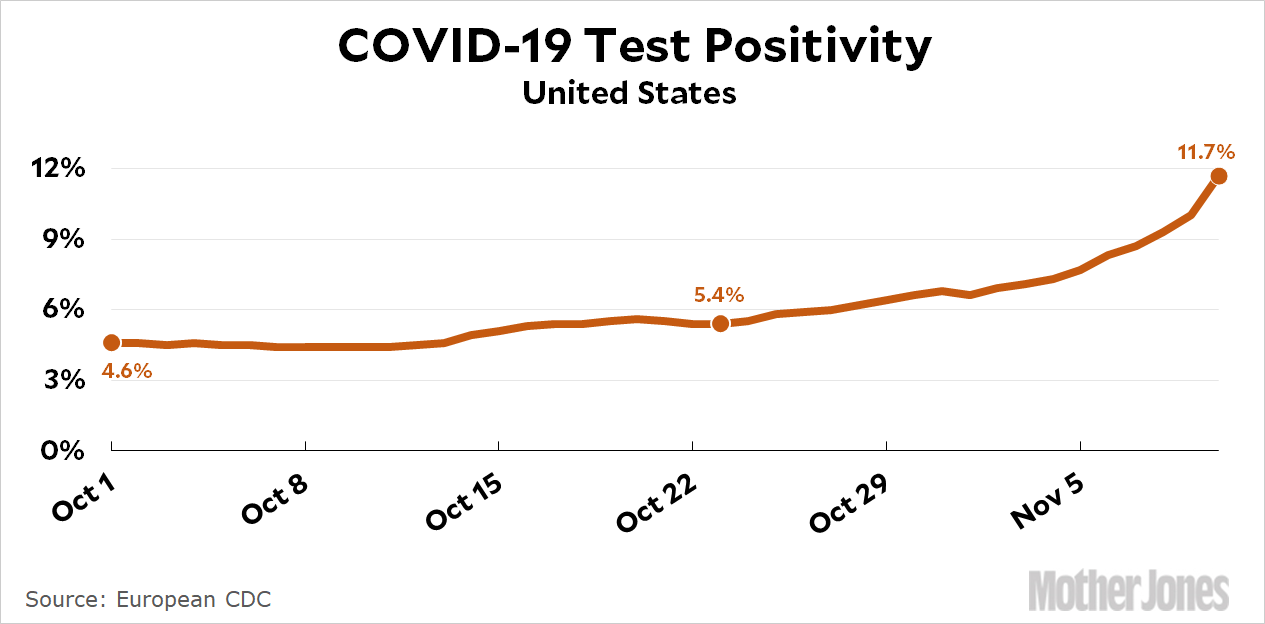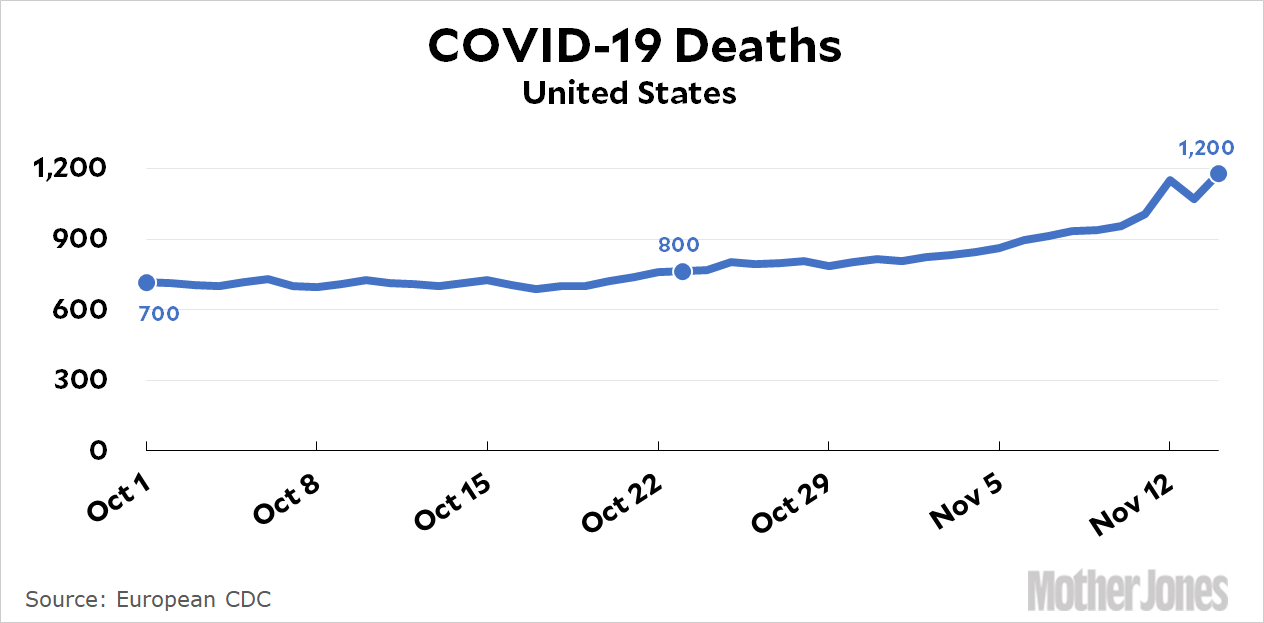It is not even close to winter yet, but already there’s nothing but bad news on the COVID-19 horizon. First off, here’s a chart you’ve probably seen a bunch of times:

In the past three weeks, the number of new cases per day has increased by about 2.3x using smoothed 7-day averages. But maybe this is simply because we’re testing more? Nope:

The testing rate has been dead flat at about 1 million tests per day. So why is the case rate growing so fast? It’s simple: more people are getting infected:

Over the past three weeks, the test positivity rate has gone up about 2.2x. This accounts for the entire increase in the case rate. So what does this mean for the death rate?

Between October 1 and October 23, the case rate went up by about half. Add three weeks to that, and between October 23 and November 14 the death rate went up by . . . about half. So, since the case rate has risen about 2.3x in the past three weeks up through today, we can probably expect the death rate to increase about 2.3x between now and the end of November. That gets us very close to 3,000 deaths per day.
It might be less than that, since the case fatality rate has been slowly declining. On the other hand, it might be more than that since the current unsmoothed case rate is about 180,000 per day. If that’s a more accurate measure, we could end up well over 3,000 deaths per day.
What’s more, this is hardly the worst it can get. At the moment, there’s no indication that the case rate is slowing down, which means the death rate won’t slow down either. It will slow down eventually, especially if more people get scared and start wearing masks and quarantining and just generally acting like this is a serious problem. Needless to say, this would be more likely if state governors helped things along by shutting down indoor dining at restaurants and Senate Republicans made this more palatable by agreeing to a bailout of restaurants and other highly affected businesses. That’s in addition to other assistance, mostly but not limited to aid to the unemployed.
Our first COVID-19 surge in April made me swear off crude projections, since they mostly turned out to be wrong. Partly this is because this isn’t just a pure mathematical exercise involving exponential growth. It also depends on how strongly the government puts in place countermeasures and how well the rest of us accept them, and that’s nearly impossible to predict. So don’t treat these numbers as gospel or anything close to it. They’re more like a warning: if we continue doing the minimum necessary to fight the coronavirus, we’ll almost certainly see a skyrocketing death rate. A lot of this is already baked into today’s numbers, but not all of it. We can still do better if we decide to put partisan idiocy behind us and simply agree to fight the pandemic with every tool at our disposal.
POSTSCRIPT: If you’d like to see this all in scary map form, just click here.

















